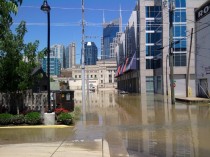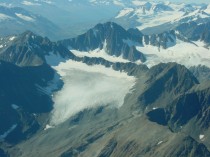C3 headlines
Floods 10X More Likely During Global Cooling Periods Vs. Global Warming Periods, EU Scientists Discover
Read here. IPCC global warming scientists and their climate models have been predicting more floods due to human-caused, CO2 warming. Like most predictions by climate model scientists, their predictions are not based on actual scientific evidence. When the proper research was done, scientists discovered that floods occur with significantly more frequency during global cooling periods, such as the Little Ice Age.

Nashville, TN May 5, 2010
“Benito et al. report that the combined palaeoflood and documentary records indicate that past floods were clustered during particular time periods: AD 950-1200 (10), AD 1648-1672 (10), AD 1769-1802 (9), AD 1830-1840 (6), and AD 1877-1900 (10), where the first time interval coincides with the Medieval Warm Period and the latter four time intervals all fall within the confines of the Little Ice Age; and calculating mean rates of flood occurrence over each of the five intervals, we obtain a value of 0.40 floods per decade during the Medieval Warm Period, and an average value of 4.31 floods per decade over the four parts of the Little Ice Age, which latter value is more than ten times greater than the mean flood frequency experienced during the Medieval Warm Period.” See post here.
------------------
New Peer-Research Finds Alaskan/Canadian Glaciers Melting Significantly Less Than Previous Estimates
Read here. Global warming alarmists and associated IPCC scientists have made erroneous claims about glaciers worldwide. The basic claim is that glaciers are rapidly melting, adding to rising sea-levels because of human CO2-induced warming. As with almost all of these claims, they shrink to minor issues when proper scientific observation is finally applied.

Tonsina Glacier, northcentral Chugach Mountains, Alaska
“The five scientists report that “between 1962 and 2006, Alaskan glaciers lost 41.9 plus/minus 8.6 km3 per year of water, and contributed 0.12 plus/minus 0.02 mm per year to sea-level rise,” which they note was 34% less than estimated by Arendt et al. (20002) and Meier and Dyurgerov (2002)...In addition to significantly revising what was previously believed about the magnitude of ice wastage in Alaska and northwest Canada in recent decades, Berthier et al. say their results suggest that “estimates of mass loss from glaciers and ice caps in other mountain regions could be subject to similar revisions,” all of which would tend to mitigate against the rapidity with which the world’s climate alarmists have long contended earth’s mountain glaciers and ice caps were wasting away and thereby contributing to global sea level rise.” Read more here.




